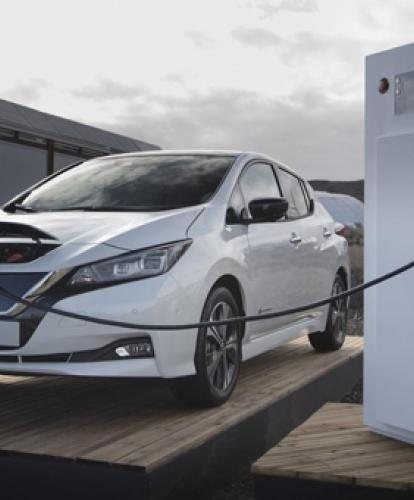Moixa and the National Grid are joining forces as part of a consortium to study how to reward EV drivers who use their car’s batteries to supprt the UK’s power grid.
The consortium will help support a rapid roll-out of vehicle-to-grid (V2G) systems, potentially allowing millions of EVs to become a key part of UK energy networks.
The prinicple is that the National Grid largely has enough capacit yto support large-scale uptake of EVs, but that capacity has to be used in a smarter way. During peak demand, the EVs can act as movable energy storage devices, and feed energy back into the home or grid. These can then recharge during off-peak times to ensure there is charge available for EV drivers when they want it.
Moixa states that ten new Nissan Leaf’s for example can store as much energy as a thousand homes typically consume in an hour. The use of smart chargers can control and balance the load on the local electricity grid, and charge the car when demand is low. The study V2GB – Vehicle to Grid Britain is one of 21 projects sharing almost £30 million of government funding.
Chris Wright, Moixa Chief Technology Officer, said: “Electric vehicles will play a key role in decarbonising road transport but put new demands on our power network. V2G could bring major savings, by managing this demand and reducing the need for costly upgrades.
“We can lower the cost of owning electric cars and support growth of this sector by sharing these savings fairly, so that drivers benefit from the use of their batteries to support the grid.”
Mark Dale, Innovation and Low Carbon Networks Engineer, Western Power Distribution, said: “V2G could present a real opportunity to provide a benefit to electric vehicle drivers, electricity customers and networks if managed in the correct way.
“The uptake of electric vehicles will present significant challenges, and smart charging along with V2G solutions could be critical in integrating them into the electricity network with minimum disruption.”
The consortium includes National Grid, Western Power Distribution and car manufacturer Nissan’s European Technical Centre, as a part of the Renault-Nissan-Mitsubishi Alliance research activities. Element Energy will coordinate the project and lead the modelling, supported by Moixa, Cenex and the Energy Systems Catapult.
Moixa’s GridShare platform uses machine learning to profile driver’s needs and behavoius, so that cars always have enough charge for the owners’ requirements.
Chris Wright continued: “Drivers are happy to earn extra money supporting the grid so long as they can use their car normally whenever they want. A freelancer who travels long distance at the drop of a hat is very different from a staffer who drives five miles to the office every day. Machine learning allows you to maximise utility around these patterns.”



